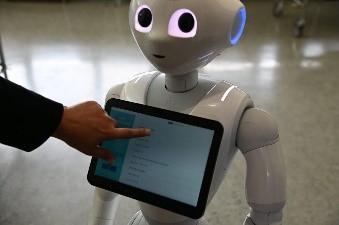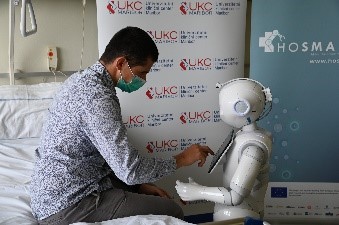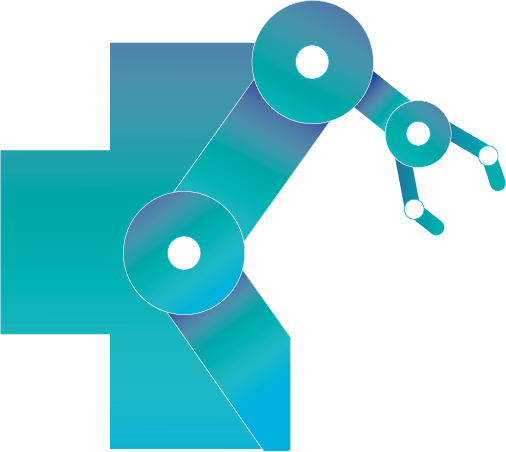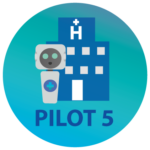ROBOTIC NURSE FOR ASSISTIVE CARE IN HOSPITALS
Description
Assistive care in hospital: robotic nurse.
Domain
Assistive Care
Leader
UKCM Hospital (Slovenia)
Background
Hospitals are facing population and workforce ageing while the World Health Organization calls for urgent investments in nurses (from approximately 6 million up to 9 million in 2030). At the same time, there is a need for reducing overworking – which is partially due to repetitive and not added value tasks – which leads to human errors and less optimal use of resources. The combined used of Artificial Intelligence and robots, which can take over repetitive and daily tasks without nursing-added value, can contribute to optimizing the use of hospital resources, decrease in mistakes due to overload and increase patient satisfaction by delivering more personalized and patient-centric care. By replacing non-essential interaction and work we enable the increase in the quality and time nurses spend engaged with patients.
Objectives
Fundamentally adjust the grand round routine to include only clinicians and the robot which means:
- support and improve the quality of nursing care and, therefore, patients’ satisfaction by introducing a combined AI & Social Robotic System solution.
- reduce the amount of no- nursing tasks to be carried out nurses
- improve the overall patients’ data collection, digitalization and management system, including during patient admission
The solution
An integrated solution made of a computerized clinical decision support system and a service robot that serves as a tool to intuitively collect and display health/clinical data, to support nurses by taking over activities that represent no added value to nursing (e.g. administrative work, routine work) and to entertain, inform and motivate patients.
The system enables not just telemonitoring but also to work with qualitative reports and self-reports from patients regarding pain, issues, psychological wellbeing. The robot can also be integrated into general administrative data collection and digitalization processes before admission or by the time the patient is admitted. The robot provides support also during grand-round routines by displaying relevant data and helps during the distribution of medicines by identifying alternatives in case the prescribed ones should not be available. Basically, the robot collects whatever needs to be done with the patient and avoid that their input is retrieved manually either by nurses or doctors themselves. The humanoid factors facilitate more natural, trustworthy, and engaging interaction while a computer vision, language, and acoustic processing helps to understand and motivate patients to exercise or move. Thanks to integrated blockchain technology, the accountability of the robot is guaranteed as well. This makes it possible to know what the robot is doing at any given time, where it is, and weather the robot is the cause of eventual mistakes.


Value Proposition
We deliver a service robot that looks and talks like a human and has been designed to intuitively collect and visualize information while allowing nurses to have more time to dedicate to patients. Specifically, the robot will: 1) engage with patients, 2) motivate the patients, 3) collect and digitalize the data, 4) visualize the data on demand, 5) automate and personalize the care-workflow, 5) guarantee accountability.
Main solution provider:
University of Maribor – Contact: Izidor Mlakar, izidor.mlakar@um.si
Providers of synergic services:
ITCL / Computer vision – Contact: Silvia González, silvia.gonzalez@itcl.es
GC / Blockchain – Contact: Pauline LOYGUE, pauline.loygue@green-communications.fr
Hosting Facility:
UKCM Hospital – Contact: Igor Robert ROJ, IgorRobert.ROJ@ukc-mb.si; Maja MOLAN, Maja.MOLAN@ukc-mb.si







